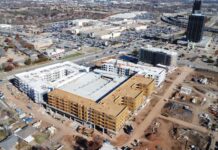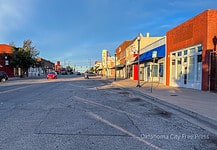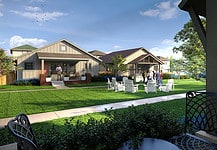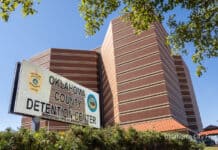Last Updated on January 7, 2024, 10:46 AM | Published: January 7, 2024
OKLAHOMA CITY — The OKC metro is on the rise, and in many high-profile (and high-priced) building cases, that’s not a metaphor.
Both the city’s profile and skyline are being raised by a number of massive-scale development projects, primarily aimed at sports, entertainment, and recreation, with each set to fundamentally change their proposed areas of the city, and each carrying its own eye-popping price tag.
With so much talk about arenas, stadiums, amphitheaters, and towers, it can get a little confusing, so we’ve put together a primer to help get you better acquainted with these projects that are likely to dominate much of the news and development of Oklahoma City over the next few years.
New Downtown NBA Arena
Far and away the most talked-about new building development project in the city – and possibly the most talked-about city news of any kind over the past year – is the recently voter-approved new Downtown arena planned as a future home for the Oklahoma City Thunder.
With an estimated cost of $900 million – at least $850 million of which will be publicly funded through an OKC sales tax – the new arena is primed to rank among the very largest building projects in city history.
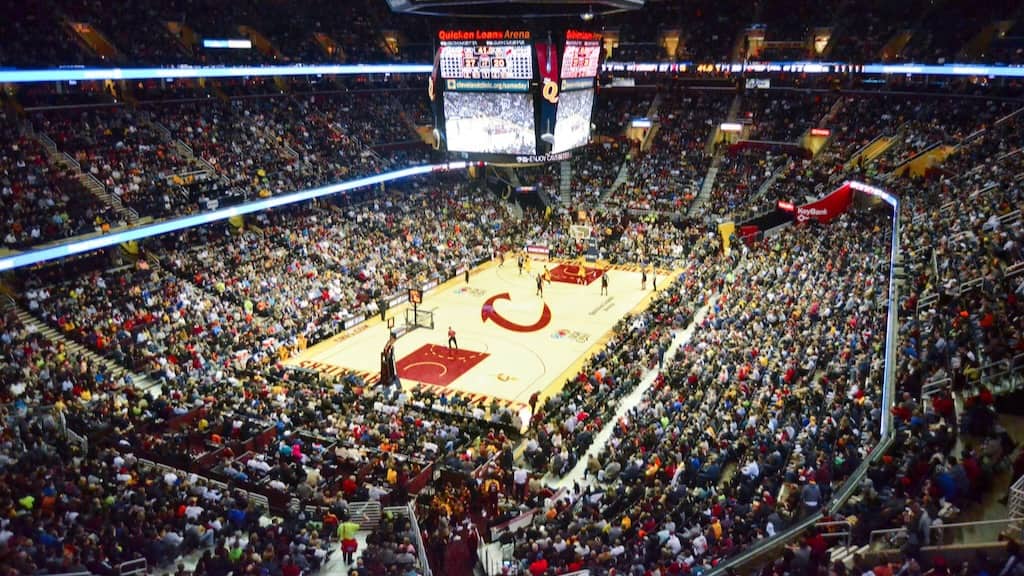
Put to a public vote last month, city residents overwhelmingly backed the proposal to fund roughly 95% of the arena’s building cost, with proponents touting its potential for major economic benefit across OKC, something openly doubted or disputed by many economists.
Along with that vote came a City Council resolution supporting a Community Benefits Agreement, a deal to be struck with Thunder ownership to build the new arena with labor-first policies and local, low-income worker protections backed and negotiated by local union leaders. City Council voted to support a CBA with a resolution, but there is currently no binding ordinance that would legally require the adoption of a CBA when the project breaks ground.
And just what ground will that be?
Suspicions were seemingly confirmed last month just two days after the funding vote when official notice was given to Prairie Surf Media that the city would not be renewing their lease on the former Myriad/Convention Center space downtown. Though that site has not yet been formally declared for the new arena, it’s the only proposed site that the city already owns, and Prairie Surf’s existing contract requires that advanced notice be given.
MAPS 4 Mixed-Use / Soccer Stadium
One of the 16 projects approved for MAPS 4 in 2019 was the development of an 8,000-seat, open-air stadium to serve as a permanent home for the Oklahoma City Energy as well as being available for high school sports, concerts, and other events.
Having played in Taft Stadium since 2015, Energy ownership put the team on official indefinite hiatus citing the need for a purpose-built, regulation size stadium and field.
That stadium looks to be set for a large undeveloped area south of Bricktown, but concerns are now cropping up regarding the estimated cost.
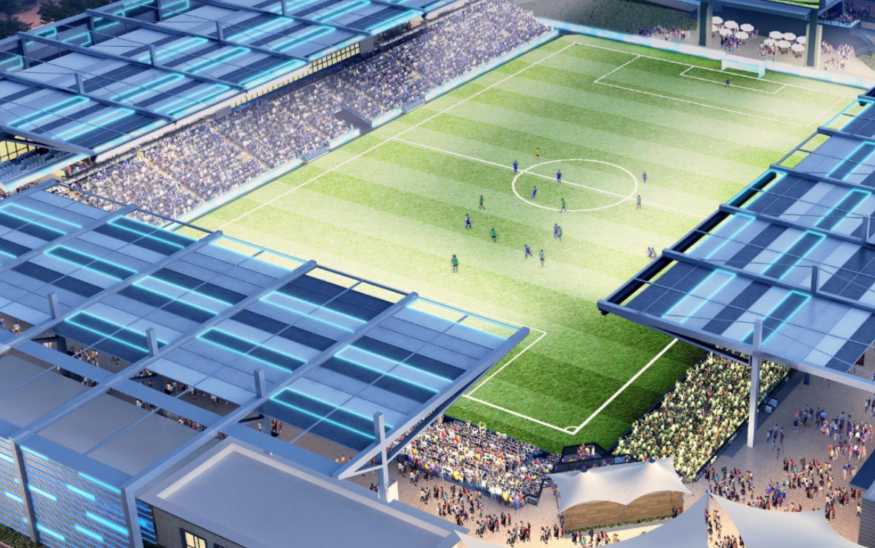
The project was originally approved for $41 million in 2019, long before a site or a design could be determined, and the team owners and project leaders now say that estimates have nearly doubled to a minimum of $71 million, due to worldwide spikes in material costs since 2020.
The increased funding, if granted, could reportedly also increase the capacity to a potential 10,000 seats.
In order for that funding increase to be approved, the project will need to be reviewed by the OKC Economic Development Trust on January 5th and again by the City Council on January 16th.
If approved, the official site and design plans would still need to be locked in, meaning that any breaking of ground on this project is still possibly years off, as is any confirmation that a new, larger stadium would result in increased ticket sales for the Energy.
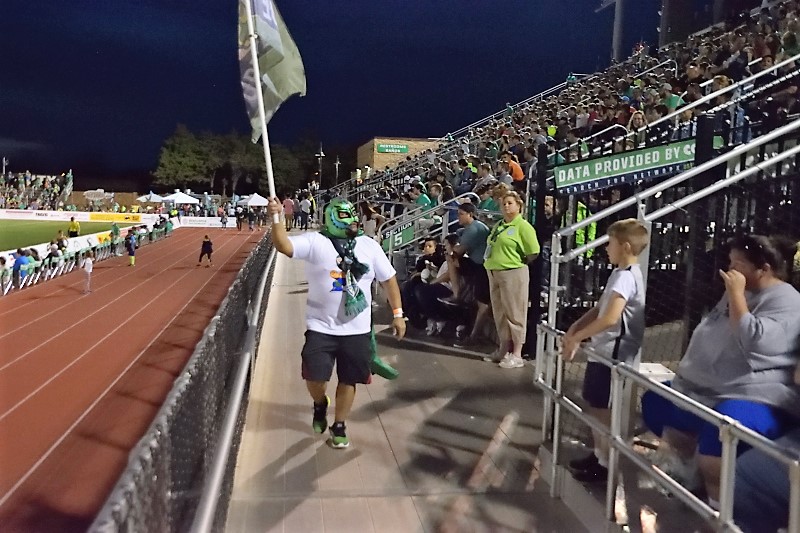
Around 2017, Free Press observed lively crowds that filled Taft Stadium. But, according to the USL’s own attendance reporting, the OKC Energy ranked 21st out of 30 teams in attendance during their 2021 season, averaging roughly 2,200 seats filled out of Taft’s available 7,500.
The highest attendance during that season was reported at 3,677 for their September 2021 match against Indy Eleven.
The Sunset Amphitheater at Mustang Creek Crossing
Just in case the new state-of-the-art arena and stadium weren’t enough to entice concerts and performing acts into OKC, a new 12,000 seat open-air amphitheater is being planned for far western Oklahoma City in the form of the Sunset Amphitheater at Mustang Creek Crossing.
National venue and hospitality developers Notes Live have purchased the land in the Mustang Creek Crossing area at the intersection of I-40 and the John Kilpatrick Turnpike and are eyeing an opening in time for the 2025 summer tour season.

The amphitheater’s capacity places it firmly between the 8-10,000-seat stadium and the roughly 18,000-seat arena, and is meant to compete with lucrative, respected venues in similar markets, such as Colorado’s Red Rocks and The Pavilion at Toyota Music Factory outside of Dallas.
It will also be competing, however, with an identical Sunset Amphitheater that Notes Lives is planning for Broken Arrow, another in a projected 12 markets in which the rapidly expanding upstart company hopes to build a nationwide network of Sunset Amphitheaters.
In addition to plans for high-level food and hospitality accommodations and what the company touts as “unbeatable sound and sight lines,” much of the financial hopes are being placed on a selection of private fire pit suites, a feature that every planned Sunset Amphitheater will share. Patrons can purchase a potentially lifelong private ownership of one of the suites – making them a “partner” investor in the venue – at a range of packages from $125,000 to $650,000.
According to the Notes Live website, more than 40 such packages have already been sold.
The Boardwalk at Bricktown
The only entry here that isn’t explicitly intended for sports or entertainment is the recently heavily buzzed-about Boardwalk at Bricktown, another billion-dollar, mixed-use development that’s set to host multiple apartment buildings, a world-class hotel, and countless retail and restaurant spaces.
The original concept was approved for subsidies from the taxpayers of Oklahoma City.
But, recently, the nationwide buzz the project has been garnering comes from the newly unveiled designs that include a 134-story apartment tower, what would be the second-tallest building in the entire country.
And this will all occupy the current large parking lot space adjacent to the U-Haul building in Bricktown, placing the massive development right across the street from both the existing Paycom Center and the likely site of the forthcoming new arena.
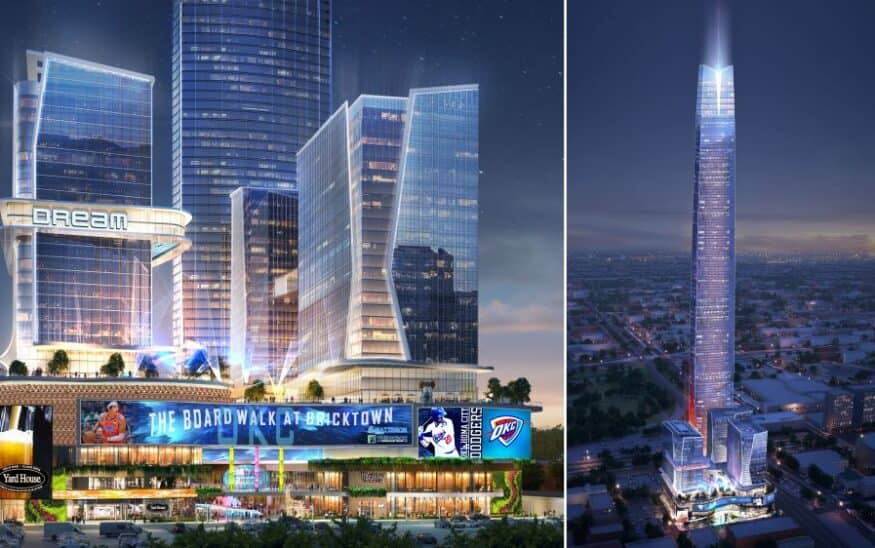
Scot Matteson, CEO of California-based Matteson Capital, who are behind the development, says that the mammoth tower will be planned as a second phase of the project after the hotels, apartments, and retail spaces have all been completed. He has also implied that if funding or logistics cannot be worked out at that time, the tower will likely be greatly reduced or even abandoned altogether.
This has led to increased speculation that the sky-scraping tower design – which has not yet been approved by City Council – is potentially just a promotional tactic meant to stir interest and investment.
If it is intended to be a reality, however, there’s been no word yet on how builders would plan to mitigate the wind and weather issues that dramatically slowed construction of the 50-story Devon Tower, currently the tallest building in Oklahoma.
There’s no word yet on when the newly revised “Phase 2” designs will go before City Council, but Phase 1 of the Boardwalk at Bricktown development is expected to break ground this summer.
Brett Fieldcamp has been covering arts, entertainment, news, housing, and culture in Oklahoma for nearly 15 years, writing for several local and state publications. He’s also a musician and songwriter and holds a certification as Specialist of Spirits from The Society of Wine Educators.



